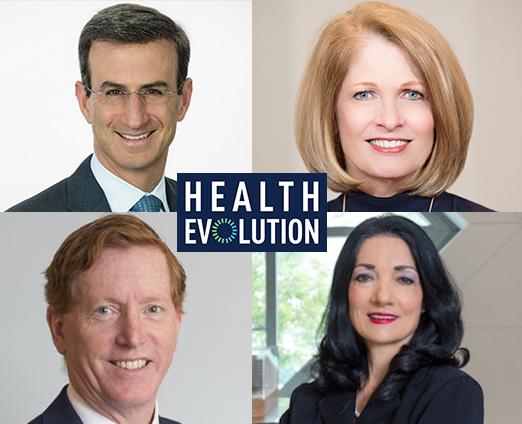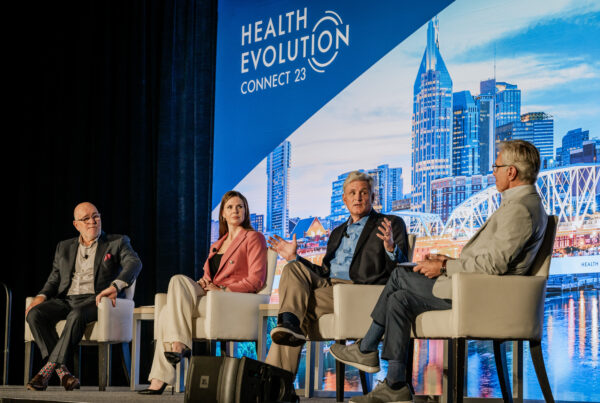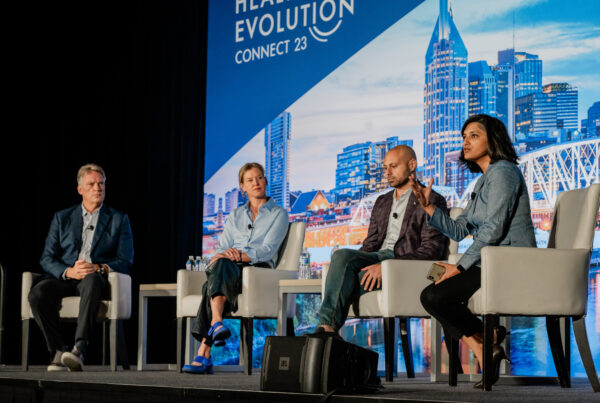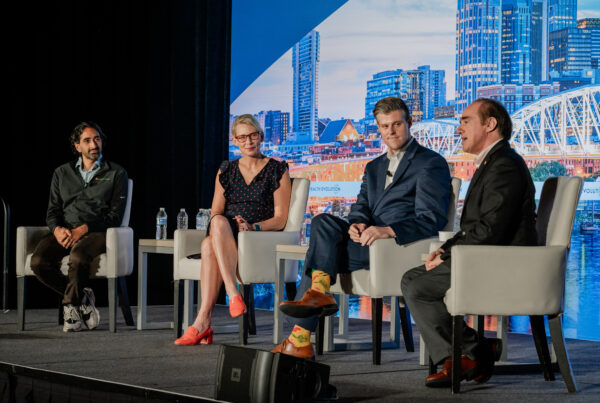Marna Borgstrom has served Yale New Haven Health for more than 40 years — and 2020 is the first during which the health system will lose money.
“Our costs are going up, increased expenses are coming, and revenues will be compressed,” said Borgstrom, who has been CEO since 2017. “That means we’re digging out of a larger hole to build budgets going forward and get back to a level of fiscal health where we can continue to re-invest in the business.”
Borgstrom is not alone. On the West Coast, Johnese Spisso, President, UCLA Health & CEO, UCLA Hospital System, is in a similar position.
“Fortunately, we have reserves to go into or we would be looking at massive layoffs and reductions in service,” Spisso said. “That’s a struggle for health systems, and we need reserves so we can weather times like this.”
Borgstrom and Spisso participated in the Health Evolution virtual gathering Financial Impact of COVID-19 on Health Systems with Massachusetts General Physician Organization CEO Tim Ferris, MD, and host Peter Orszag, CEO of Financial Advisory, Lazard.
During the discussion, the chief executives shared insights about their strategies during the pandemic response, specifically:
-
-
- Examining infrastructure expenses to identify cost savings
- Ramping up technology investments
- Reshaping the clinical footprint
-
Examining infrastructure expenses to identify cost savings
Ferris, Spisso and many CEOs are considering various ways to eliminate costs from their budgets in response to the pandemic.
“We’re re-evaluating our real estate footprint because we have found that what we thought might be unimaginable in terms of having people working remotely has proven not to be true,” Borgstrom said. “We are finding that we can do a lot of work remotely that we hadn’t expected to before, and that will change certain elements of our infrastructure, costs, and will be part of our new normal.”
One of the first action items UCLA Health undertook was to review its expansive real estate portfolio. What did that determine? Having business functions such as compliance, finance, IT and HR working from home created greater efficiencies in each case. Another bonus is that employees’ morale and satisfaction has been high while working from home.
“We will be evaluating the working from home model for central services going forward and looking to reduce some of the most expensive real estate holdings that we have in Los Angeles,” Spisso said.
Ferris added that Massachusetts General Physician Organization is evaluating whether it needs as much ambulatory space as it has maintained.
“It’s hard to say where the telehealth proportion will come out. It’s probably different from specialty to specialty, but it looks as though 40 percent to 50 percent of visits could be done virtually in the new world,” Ferris said. “That’s certainly about what it is in the Kaiser system and has been for a decade. So we expect that our administrative and clinical footprint will look different as a result of both the working from home and telemedicine.”
Ramping up technology investments
IT is often seen as a cost-center that can be cut when budgets get tight, but Borgstrom, Ferris and Spisso all agreed that technology will continue to be critical.
“We can invest in innovation, invest in new programs, we can invest in technology,” Borgstrom said. “Otherwise, this would become a moribund field, and that’s not where we want it to be.”
Spisso added that UCLA’s robust investment in information technology enabled it to respond quickly in serving so many patients remotely and having much of its workforce functioning productively from home.
“This next year, even though we’ve been looking for savings and opportunities in every part of our budget, we haven’t reduced our support to IT,” Spisso said. “In fact, we’ve increased it to make sure we can keep up with demand.”
Reshaping the clinical footprint
Examining existing infrastructure and recognizing the need for continuing IT investments, taken together, point in the direction of new models of care delivery and sites of service, including rapid scaling of capacity when needed.
Prior to COVID, UCLA already had an aggressive expansion plan to open 10 or more clinics each year.
“What we’re seeing now is with the added capacity we have with telemedicine, we can see more patients without putting more bricks and mortar around that,” Spisso said. “That strategy is here to stay.”
Borgstrom added that Yale New Haven Health now knows it can also create a tremendous amount of capacity that would have been difficult to imagine before COVID-19. And Ferris said ICU and capacity planning have been growing steadily in tertiary centers and that will continue if not accelerate.
“We have been planning a building for some time and now we are literally going back to the drawing board and adding much more ICU capacity,” Ferris said. “Because we will be the local center for severe illness.”
Outside of the ICU, UCLA will continue to advance its care-at-home models with the goal of not having to curtail other services in the event of a second COVID-19 wave or future outbreaks.
Borgstrom explained that Yale New Haven Health has piloted a care at home model consisting of tools to conduct daily pulse oximetry and blood pressure readings via a cuff and tablet connecting a hospitalist or RN to a patient. As long as the readings are within specified thresholds, the individual can more effectively be cared for at home.
Conclusion
As COVID-19 continues wreaking financial havoc on health systems and other provider organizations, a clear takeaway from the pandemic is that CEOs such as Borgstrom, Ferris and Spisso are already considering future outbreaks.
“We know that we have to be prepared at any point in time for another pandemic, or the next wave of this one” Borgstrom said. Ferris added: “This is not our last pandemic.”
Preparation requires that providers be able to virtualize the workforce and care delivery, quickly scale capacity, and do so while maintaining day to day services and operations.
“We have to be more than a COVID-19 health system,” Spisso said. “The public relies on us so we have to figure out how to take care of all of our patients safely and effectively.”
Watch this webcast on demand:











